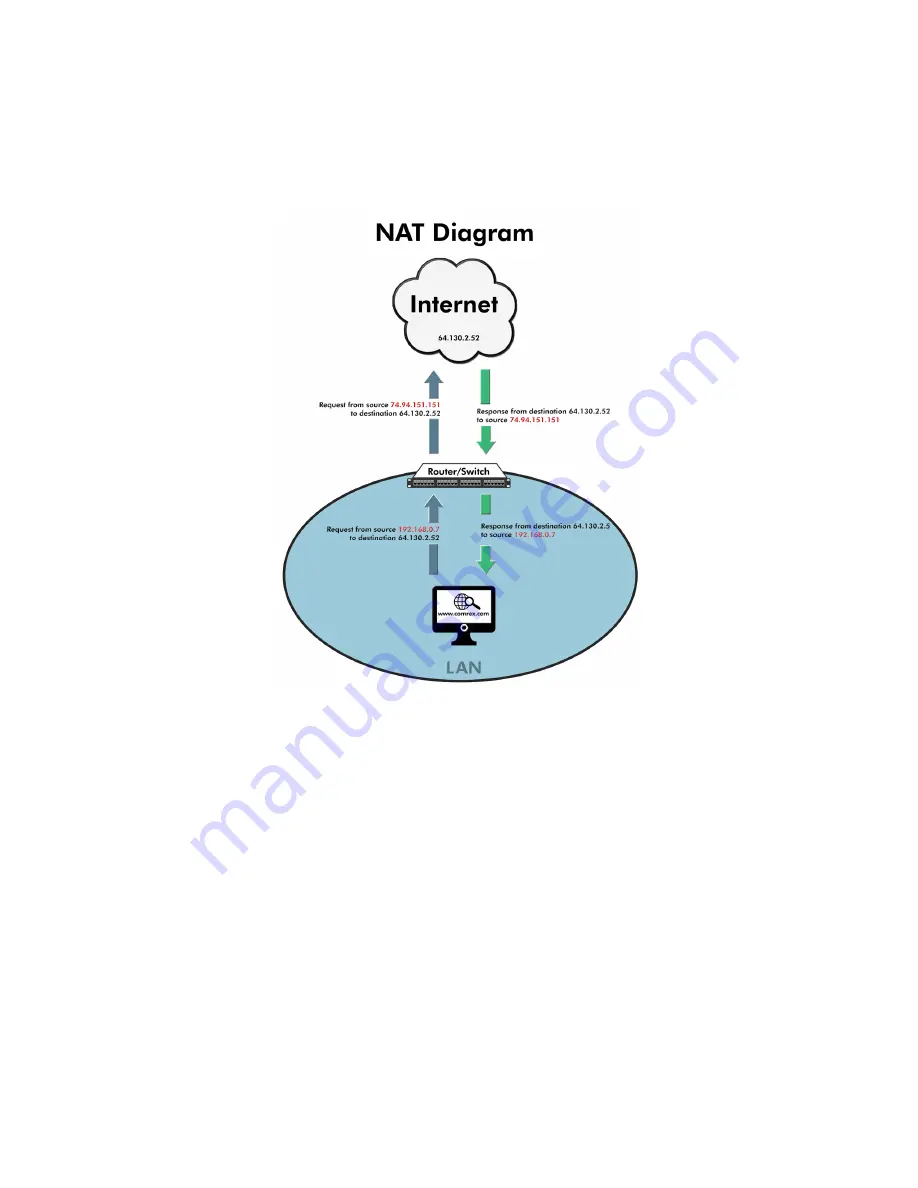
43
The router will record the source address of the packet (192.168.0.7), change it to the public IP of the router (74.94.151.151),
and send it along to the destination IP address. This is so the web site knows the correct address to which to respond.
The router will now wait for the response from the web site (it’s smart enough to know to expect something from the
destination address of the packet it sent). It will then change the destination address of the packet to the private IP address
of the laptop before sending it along to the LAN.
In reality, NAT is more complex than this, changing port numbers as well, but we’ve kept the concept to the bare basics to
outline why NAT hurts VoIP.
NAT provides for many benefits, including address reuse and basic security. This security exists because packets that arrive
from the public Internet without being requested from within the LAN will be discarded. But it’s this security element that
makes VoIP difficult when using NAT. The concept of placing a VoIP call to a device behind a NAT requires that the NAT
deliver unsolicited packets from the Internet to the VoIP device.
This is a complex topic, and as we’ll see later on, NAT traversal can cause all sorts of trouble for VoIP.
Содержание VH2
Страница 1: ...Product Manual ...
















































